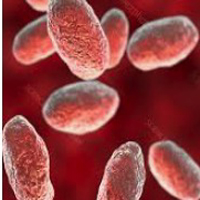Isolation of Yersinia pseudotuberculosis in bovine mastitis: A potential milk-borne hazard

Accepted: 4 November 2019
HTML: 12
All claims expressed in this article are solely those of the authors and do not necessarily represent those of their affiliated organizations, or those of the publisher, the editors and the reviewers. Any product that may be evaluated in this article or claim that may be made by its manufacturer is not guaranteed or endorsed by the publisher.
Authors
This paper describes the first confirmed case of a subclinical mastitis caused by Yersinia pseudotuberculosis in a dairy cow from Italy. Milk samples from an adult cow of the Bruna breed were analyzed accordingly to standard milk cultivation protocols. Bacteriological examinations allowed to isolate atypical Gram-negative rods identified as Y. pseudotuberculosis using biochemical tests. The isolate was subjected to Whole Genome Sequencing (WGS) and the species identification was confirmed using rMLST. Moreover, the virulence and antibacterial susceptibility of the isolate have been also determined. The most common virulence genes were screened through WGS, showing the presence of inv, ail, pil and HPI genes. No antibiotic resistance was found. Even though scarcely described as causal agent of subclinical mastitis, the detection of Y. pseudotubercolusosis suggests that this pathogen could be spread to humans through raw milk, representing a potential food safety hazard.
How to Cite
PAGEPress has chosen to apply the Creative Commons Attribution NonCommercial 4.0 International License (CC BY-NC 4.0) to all manuscripts to be published.

 https://doi.org/10.4081/ijfs.2020.8527
https://doi.org/10.4081/ijfs.2020.8527



